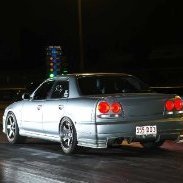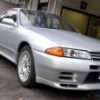Woo Hoo Dump Pipe Finially Arrived
Announcements
-
Similar Content
-
Latest Posts
-
Waaay ahead of ya....(evil laugh!!) Will show the fitment and spec details later when it isnt as rainy !
-
By Dose Pipe Sutututu · Posted
I'll probably be putting the shit box back on the dyno again soon, I want to dial in the closed loop boost control properly. I'll have a camera facing the car/motor for fun too. Just note, there are essentially 3x 10AN inlets going into the catch can and 1x going back to the intake pipe. Most of the time the catch can "return" to the sump actually is the crank case breather, pushing air out. -
I have the R3C with a Nismo slave and by no means does it behave like a stocker, it ain’t THAT bad. On take off just give a bit more throttle than you would say a coppermix and it’s fine. It will not slip though.
-
Okay. Final round of testing done. Got a friend to hook up a fancy scanner to the car and we also ran some compression and leakdown tests, she is healthy. The MAF was definitely the culprit. So for future reference anyone with similar issues that find this thread. I suggest the following steps, in order of affordability: Check your spark plugs for any fouling, replace plugs if they are bad or re adjust the gaps making it narrower (0.8mm would be good). Check every coil's resistance with a multimeter. It can be done by probing the IB and G pins on the coil pack. Resistance should be around 1.4 (+/- 0.1) Ohms Check the MAF. If you have Nissan connect or a good scanner with the 14 adapter it should allow you to see the voltage on the MAF reading should be around 1.1 - 1.2V when car is idling. But if you don't, buy a new MAF from Amazon and test, then return it. (For instance, I got a Chinese one for $40 that was reporting 1.3v on idle). If you still have scanner, you can run tests on the injectors to see if they are working, just remember to unplug the fuel pump fuse/relay and have no pressure on the line. Then listen for the noises that the injectors make. Clean/replace injectors as needed. Once you find the issue and fix, order thousands of dollars worth of OEM parts to refresh unrelated things (Optional) PS: Thanks to the absolute legends of this forum for the responses and help to someone that went a bit over their head. (me)
-









Recommended Posts
Create an account or sign in to comment
You need to be a member in order to leave a comment
Create an account
Sign up for a new account in our community. It's easy!
Register a new accountSign in
Already have an account? Sign in here.
Sign In Now